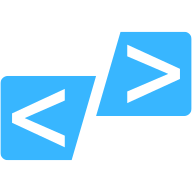5 Effective Strategies for Logging and Monitoring Backend Applications
Logging and monitoring backend applications can be challenging, but leveraging effective strategies can make a significant difference. This article delves into proven methods for prioritizing structured centralized logging, ensuring real-time observability, and utilizing centralized logging platforms. Insights from industry experts highlight the importance of a multi-layered strategy, combining logging, monitoring, and alerts to maintain robust backend systems.
- Prioritize Structured Centralized Logging
- Ensure Real-Time Observability
- Use Centralized Logging Platform
- Utilize Multi-Layered Strategy
- Combine Logging, Monitoring, Alerts
Prioritize Structured Centralized Logging
Coming from a cloud background dealing with distributed architecture, logging and monitoring are critical for maintaining application stability, performance, and security. A well-structured strategy ensures real-time observability, faster debugging, and proactive incident response.
I have used various strategies in the past. Example below:
Structured & Centralized Logging where logs must be structured (JSON format) for better readability and querying. We use log aggregation tools to collect logs from microservices, databases, and APIs.
In a cloud environment where we deal with high-performance machines and AI servers, we do real-time Application Monitoring. We track key performance server metrics (CPU, memory, response time, error rates, Server degradations). Based on certain thresholds, we set up alerts/incident tickets for anomalies to detect failures before they impact users.
With the implementation of AI techniques, we have built AI-Driven Anomaly Detection. We use machine learning-based monitoring to predict failures before they happen. For example, predict hardware or network failures. AI-powered tools help automate root cause analysis.
Which tools and techniques are effective is need-based. Different organizations use different methods. Big cloud organizations like Microsoft use multiple approaches that we have identified above.

Ensure Real-Time Observability
My strategy for logging and monitoring back-end applications in production focuses on centralized logging, real-time observability, and automated anomaly detection to ensure scalability, performance, and reliability.
For logging, I implement a structured logging approach using JSON logs to improve searchability and indexing. I centralize logs with ELK Stack (Elasticsearch, Logstash, Kibana) or AWS CloudWatch Logs to aggregate application, database, and infrastructure logs. Log retention policies are set to balance storage costs and compliance needs.
For monitoring, I use Prometheus + Grafana to track CPU usage, memory consumption, database queries, and request latencies. AWS X-Ray or OpenTelemetry provides distributed tracing, allowing visibility into microservices performance, API calls, and bottlenecks.
To detect and respond to issues proactively, I set up real-time alerting with AWS CloudWatch Alarms, Datadog, or PagerDuty, ensuring automated anomaly detection and on-call notifications. Error tracking with Sentry helps capture and diagnose application crashes efficiently.
This approach ensures full-stack observability, rapid debugging, and proactive system health monitoring, minimizing downtime and maintaining high availability in production environments.

Use Centralized Logging Platform
Our backend logging and monitoring strategy focuses on rapid detection, clear diagnostics, and proactive issue prevention.
We use structured logging (JSON format) to ensure clarity, enriched with contextual metadata for easy correlation and traceability. Logs from backend services feed into a centralized logging platform like Graylog or ELK (Elasticsearch, Logstash, Kibana), enabling real-time analysis, alerting, and visualization.
For monitoring, we rely on tools such as Prometheus & Grafana, integrating metrics on performance, latency, resource utilization, and error rates. This helps quickly identify issues or bottlenecks before they affect users.
Key elements of our strategy include:
* Centralized structured logging for fast troubleshooting.
* Real-time alerts triggered by anomalies or critical events.
* Dashboards & visualizations to identify trends.
* Regular log analysis for proactive improvements.
Combining structured logging with effective monitoring tools provides excellent visibility, reduces downtime, and improves the overall reliability of our applications.
Utilize Multi-Layered Strategy
As a co-founder of Middleware.io, I'm excited to share our approach to monitoring API performance and uptime. At Middleware, we eat our dog food, relying on our platform, supplemented and integrated with other tools, to ensure our API's performance and uptime meet the highest standards.
Our Approach:
We follow a multi-layered strategy combining synthetic monitoring, real-user monitoring, and logs analysis to view our API's performance comprehensively.
1. Synthetic Monitoring
We utilize our platform to simulate API requests from different geographic locations. This helps us detect issues before they affect our users.
2. Real-User Monitoring (RUM)
We integrate RUM into our API to monitor performance from the end user's perspective. This provides valuable insights into how our API behaves in real-world scenarios.
3. Logs Analysis
We analyze logs from our API gateway and application servers to identify errors, slow responses, and other performance issues.
Key Metrics:
We track the following key metrics to measure our API's performance:
Response Time: Average time taken for our API to respond.
Error Rate: Percentage of failed requests.
Throughput: Number of requests handled per unit of time.
Uptime: Percentage of time our API is available.

Combine Logging, Monitoring, Alerts
For logging and monitoring backend applications in production, my strategy revolves around real-time observability, structured logging, and proactive alerting. A well-implemented system ensures fast troubleshooting, performance optimization, and security compliance.
Key Components of My Strategy:
Centralized Logging - I use tools like ELK Stack (Elasticsearch, Logstash, Kibana) or Grafana Loki to aggregate logs from different services into a single platform. Structured logging (JSON format) makes searching and filtering logs easier.
Distributed Tracing - For microservices, tools like Jaeger or OpenTelemetry help trace requests across multiple services, identifying bottlenecks and latency issues.
Metrics & Monitoring - Prometheus + Grafana is my go-to for real-time performance monitoring, tracking CPU, memory, request latency, and error rates. Custom business metrics are also logged for deeper insights.
Alerting & Anomaly Detection - Setting up automated alerts via PagerDuty or Opsgenie ensures the team is notified immediately when anomalies occur, minimizing downtime. Machine learning-based anomaly detection in Datadog or New Relic helps catch issues before they escalate.
Log Retention & Compliance - I ensure logs are retained and encrypted using AWS CloudWatch, Azure Monitor, or Google Cloud Logging, aligning with security best practices.
By combining structured logging, real-time monitoring, and automated alerts, this approach ensures backend stability, faster debugging, and a better user experience in production environments.



